Notes: The second Heywood station was located on the Lancashire & Yorkshire Railway’s (LYR) Castleton and Bury line which was part of a through route that linked Rochdale to Liverpool via Bury and Bolton. Originally the line between Castleton and Bury had been a branch of the Manchester & Leeds Railway (M&L) which had opened on 15 April 1841. The M&L had obtained an Act on 9 July 1847 to extend the branch to Bury where it was to make an end-on connection with the Liverpool & Bury Railway (L&BR). The M&L took over the L&BR on 27 July 1846 and changed its name to the LYR when it obtained its Act for the Bury line.
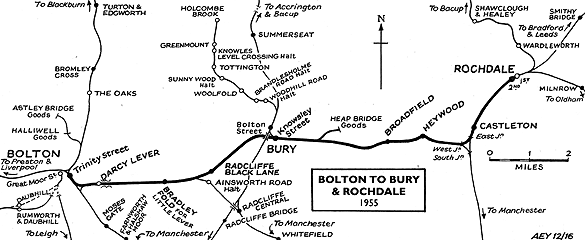 |
The extension to Bury opened on 1 May 1848 and a new station was provided at Heywood. The line was double track (the original branch to Castleton had been single track but it was doubled as part of the Bury line works; a west-to-south connection was also put in at Castleton so that trains could run direct to and from Manchester). The station was located just to the north of the original. Located north of Sefton Street and south of Railway Street the station was on a sharp curve. Maps from the period show a relatively small building on the up platform (Castleton direction).
By 1877 a signal box had opened at Heywood station. It was located at the east end of the up platform. It was equipped with a 20-lever frame.
By 1887 the station had been enlarged. The main facilities were still on the up platform. They consisted of a lengthy, single-storey red-brick building under a pitched slate roof. The openings on the platform elevation were given pointed arches of polychrome brickwork and a pair of dark string courses connected each opening creating a lively appearance. At the western end the entrance to the station building was through a hipped-roofed section, protruding further onto the platform. Detail of the smaller building on the down platform is not clear from photographs of the station. Both platforms were sheltered by hipped awnings adorned with remarkable valances whose ‘curious iron lacework’ is mentioned by Biddle (1973) in Victorian Stations and accompanied by a sketch of the intricate design; this embellishment was seen above the station entrance too.
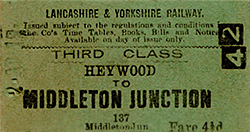 Goods facilities were provided at the original Haywood station site. They included two goods sheds, six sidings on the down side of the line (at the location of the first station), three sidings on the up side of the line (to the east of the passenger station) and a 10-ton lifting crane. Goods facilities were provided at the original Haywood station site. They included two goods sheds, six sidings on the down side of the line (at the location of the first station), three sidings on the up side of the line (to the east of the passenger station) and a 10-ton lifting crane.
By December 1895 there were 24 down trains in each direction Monday-to-Friday. On Saturdays there were three extra up and one less down services. The sunday service consisted of 9 up and 10 down services.
The 1904 Handbook of Stations listed Heywood as being able to handle general goods, parcels, furniture vans, livestock, horse vans and private carriages by passenger train.
In 1906 the station signal box was replaced with an LYR all-timber structure equipped with a 20-lever LYR frame. The new box was on the same site as the original.
On 1 January 1922 the LYR was absorbed into the London & North Western Railway (LNWR).
The LNWR was absorbed into the London Midland & Scottish Railway (LMS) on 1 January 1923.
On 23 August 1931 the station signal box was closed. Its functions transferred to Heywood Goods Box located east of the station at Green Lane Level Crossing; that box was renamed Heywood Station.
There had been a signal box at Green Lane since 1871. From that date until 1922 it had been a Saxby & Farmer Type 6 structure equipped with a 25-lever frame. It was originally called Green Lane Crossing being renamed Heywood Goods by 1921. The box was replaced in 1922 with an LYR Size 6 structure equipped with an LYR rear-mounted 28-lever frame).
By the summer of 1947 the service consisted of 29 up and 23 down services on Monday-to-Friday. On Saturday there were 31 up and 28 down trains. On Sunday there were 9 up and 10 down services. Up trains served destinations including Heywood itself, Manchester Victoria and Rochdale. Down trains served Bacup, Bury Knowsley Street, Bury Bolton Street, Bolton and Wigan Wallgate.
On 1 January 1948 Heywood became part of British Railways (BR) London Midland Region (LMR).
BR(LMR) fitted regional vitreous enamel signs in the late 1950s including totem nameplates and running-in nameboards, but gas lighting remained in use and never gave way to electricity.
BR(LMR) improved the level of service. Throughout the 1950s and into the early 1960s the passenger services remained fairly constant at over 30 departures in each direction on Monday-to-Saturday. Even on Sunday a good service was operated. Heywood enjoyed through services to Bacup, Blackburn, Blackpool, Liverpool Exchange, Manchester Victoria, Oldham, Rochdale, Southport Chapel Street and Wigan Wallgate.
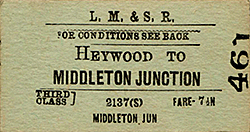 The 1956 Handbook of Stations listed the same facilities as in 1904 and a 10-ton lifting crane was still in operation. The 1956 Handbook of Stations listed the same facilities as in 1904 and a 10-ton lifting crane was still in operation.
The Reshaping of British Railways (‘Beeching Report’) of 1963 did not list the passenger services on the Bolton – Castleton line for withdrawal but they were in the ‘for modification’ list. On 30 October 1964 BR(LMR) proposed that passenger services between Wigan Wallgate, Bolton, Bury and Rochdale should be withdrawn, and this generated a great deal of local protest. From the start of the winter 1964 timetable Sunday services ceased to operate.
On 14 September 1966 the Minister of Transport refused to sanction withdrawal of the passenger service between Wigan, Bolton, Bury and Rochdale and consented only to the closure of Lostock Junction station between Wigan and Bolton. Under a separate closure proposal, however, the Bacup-Manchester Victoria service ceased to run after 3 December 1966.
The summer 1967 timetable showed 23 up departures on Monday-to-Friday and 26 on Saturday; Sunday services operated between 18 June and 17 September only and 11 departures were provided. In the opposite direction there were 23 Monday-to-Friday departures, 28 on Saturday and 12 on Sunday. Destinations, in addition to Rochdale and Bolton Trinity Street, were Bury Bolton Street, Blackpool (North and South), Wigan Wallgate, Liverpool Exchange and Southport.
On 16 October 1967 the goods facilities at Heywood were closed.
In 1968 BR(LMR) once more proposed to withdraw all passenger services from the line and again local people fought the proposal.
From 8 September 1969 Heywood became an unstaffed station. In the same year the Minister of Transport approved the proposal to withdraw the passenger service. Notice was given that all passenger services would be withdrawn with effect from 5 October 1970.
The summer timetable for 1970 showed 19 up and 17 down services. The last trains ran on Saturday 3 October 1970.
The last departure from Heywood was the 20.21 service to Rochdale. Heywood station closed completely on Monday 5 October 1970.
The line through Heywood became a single-track railway on 14 November 1971. The down line became bi-directional and the up line was lifted shortly after. Heywood Station signal box at Green Lane closed when the line became single track - it was replaced with a ground frame which was needed as there were sidings to the east of the level crossing which served a wagon works. The line through Heywood station had been retained to serve trains that ran between Castleton and Rawtenstall where there was a coal depot.
The main building on the up platform at Heywood was demolished sometime between 1976 and 1983; the down platform buildings had been removed by 1976.
The coal trains ceased to run on 5 December 1980. The ‘Rossendale Farewell’ rail tour passed through Heywood on 14 February 1981 and after that date the line was taken out of use.
On 25 July 1987 the East Lancashire Railway (ELR), a ‘heritage’ organisation, introduced passenger services between Bury Bolton Street and Ramsbottom. That line became a success bringing much needed tourism to the area. However on 16 August 1991 the ELR lost its connection with the national network when the Manchester Victoria and Bury line was closed for conversion to a tramway. The ELR was keen to have a connection to the national network and the solution was to acquire and reopen the Bury – Castleton line.
The ELR started to operate a service of regular passenger trains between Bury Bolton Street and Heywood on 25 July 2003. A new station was built at Heywood to the east of the original, the western end of the new station platform occupying the site of the eastern end of the second station’s up platform.
In 2010 sections of the second station’s down platform could still be seen.
Tickets from Michael Stewart, BR[LMR] map from Paul Wright and route map by Alan Young.
Sources:
- A Regional History of the Railways of Great Britain - Volume 10 The North West - Geoffrey O Holt, David & Charles 1986.
- Forgotten Railways - North West England - John Marshall, David & Charles 1981.
- Lost Stations of North West England - Paul Wright, Silverlink Publishing 2011.
- The Lancashire & Rorkshire Railway, Volume 1 - John Marshall, David & Charles 1969.
- The Lancashire & Yorkshire Railway Volume 2 - John Marshall, David & Charles 1970.
See also: Heywood (1st)
Click here to read about Heywood (3rd)
Click here to see the other stations between Bolton and Castleton:
Darcy Lever, Bradley Fold, Radcliffe Black Lane, Bury Knowsley Street,
Heap Bridge Goods and Broadfield |

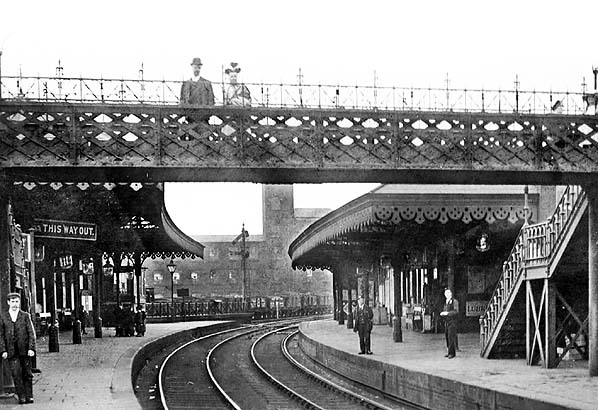
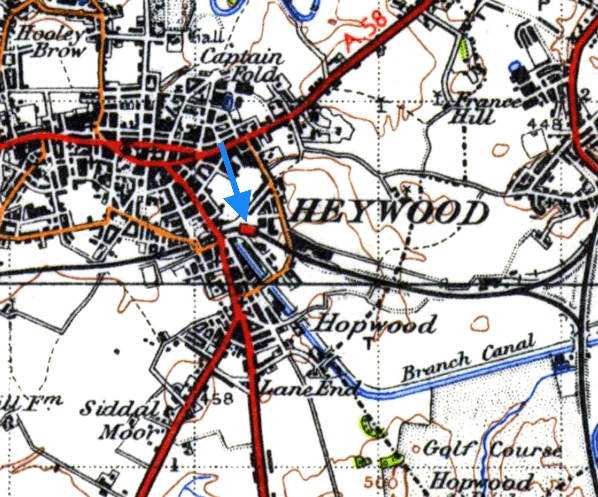
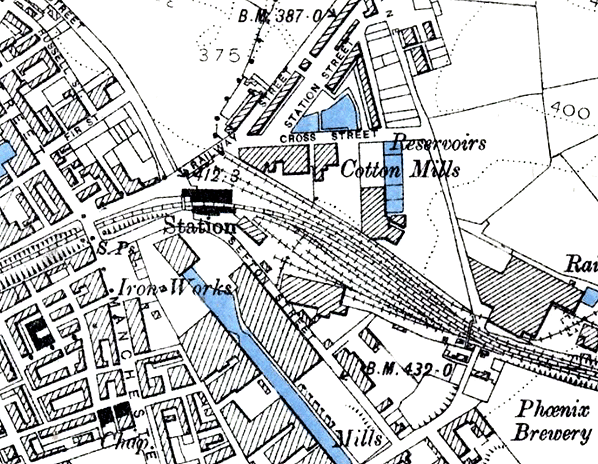
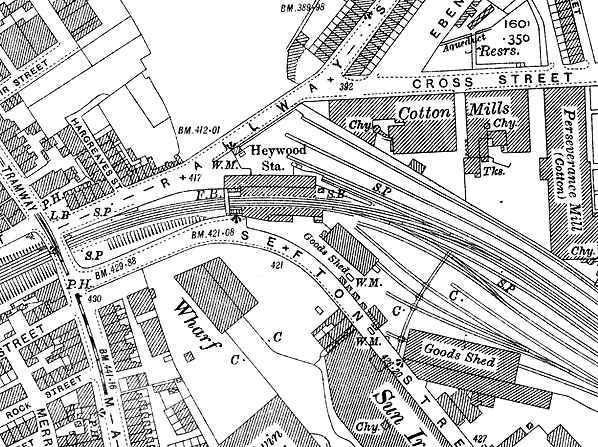
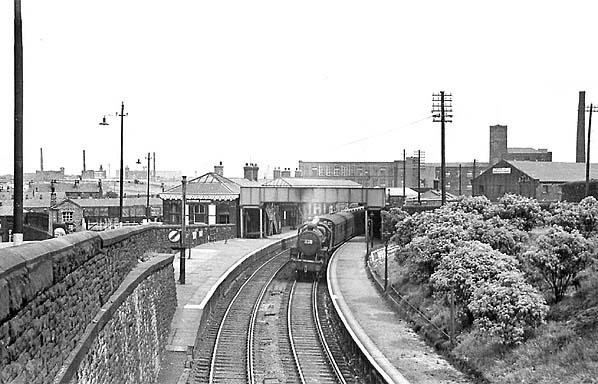
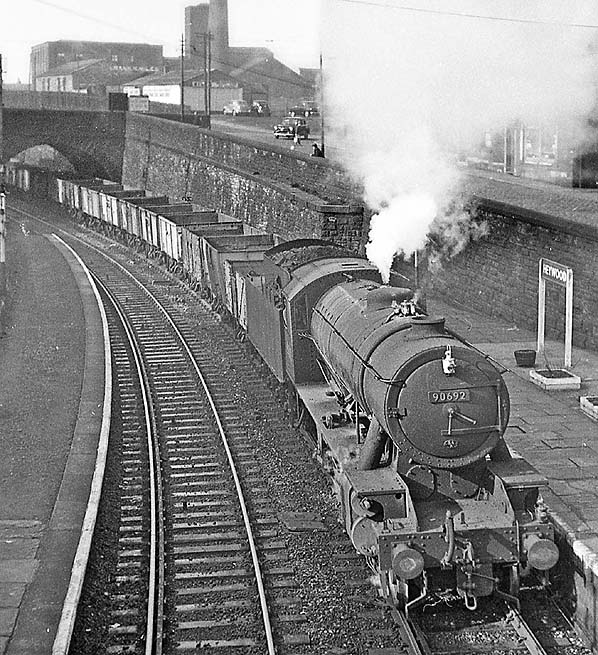
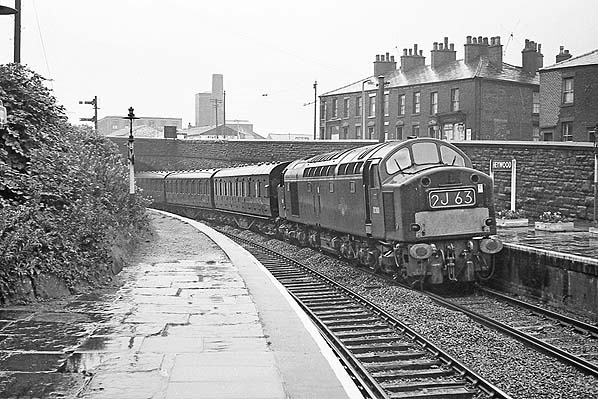
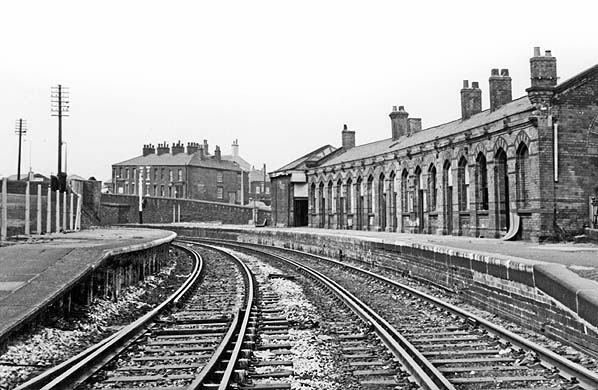
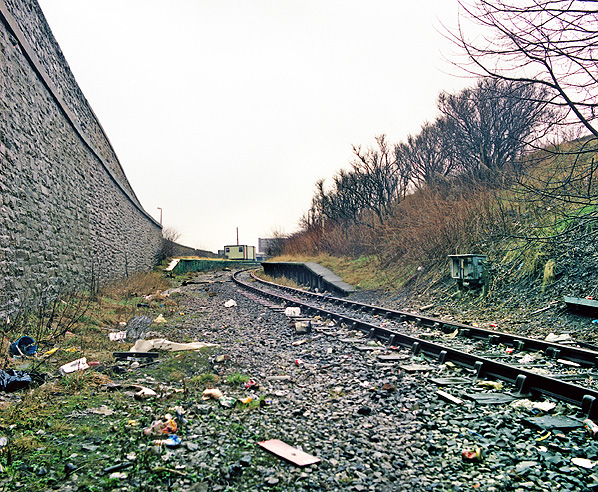
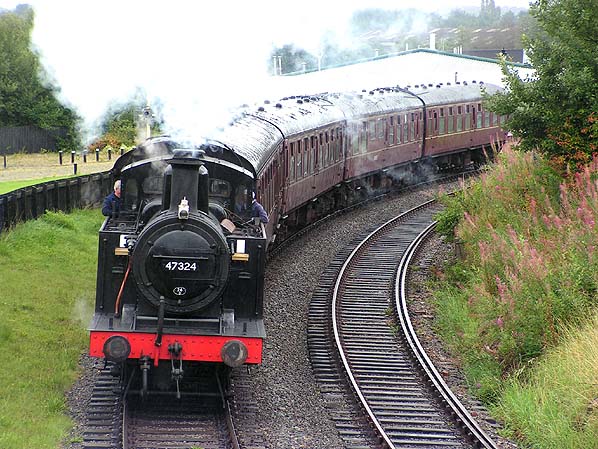


 Goods facilities were provided at the original Haywood station site. They included two goods sheds, six sidings on the down side of the line (at the location of the first station), three sidings on the up side of the line (to the east of the passenger station) and a 10-ton lifting crane.
Goods facilities were provided at the original Haywood station site. They included two goods sheds, six sidings on the down side of the line (at the location of the first station), three sidings on the up side of the line (to the east of the passenger station) and a 10-ton lifting crane.  The 1956 Handbook of Stations listed the same facilities as in 1904 and a 10-ton lifting crane was still in operation.
The 1956 Handbook of Stations listed the same facilities as in 1904 and a 10-ton lifting crane was still in operation. 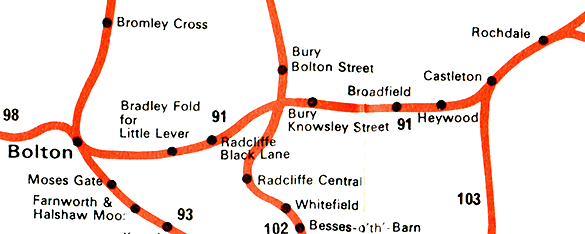
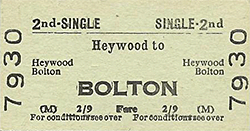
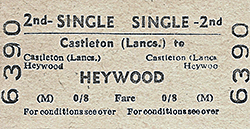

 Home Page
Home Page